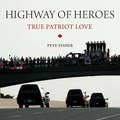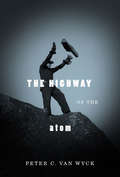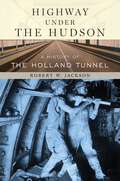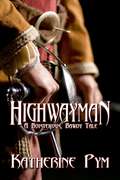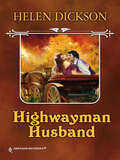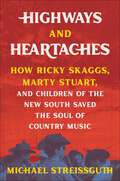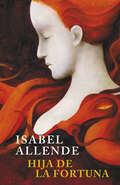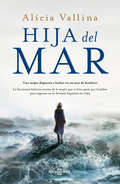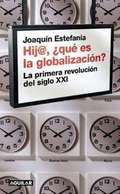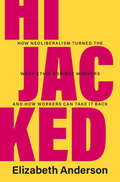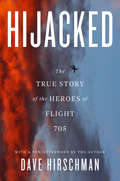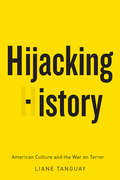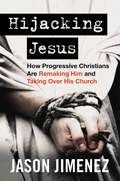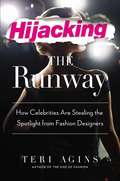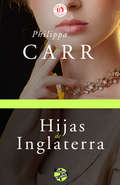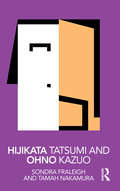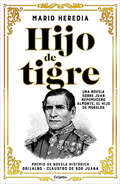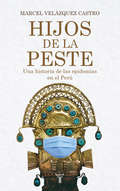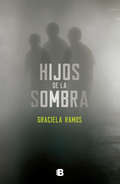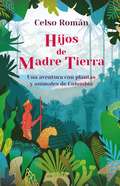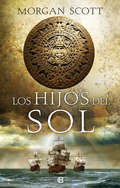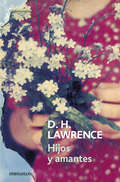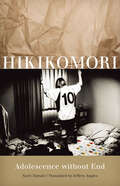- Table View
- List View
Highway of Heroes: True Patriot Love
by Pete Fisher General W.J. NatynczykCanadians line the overpasses of the Highway of Heroes to show their support, grief, and pride in our fallen champions. The first four Canadian soldiers killed in Afghanistan were repatriated at Canadas largest military base in 2002. The fallen soldiers were driven down the 172-kilometre stretch of highway between Trenton and Toronto, and pedestrians lined the overpasses, hoping to make a connection with the grieving families. The support these people show isnt political; its not a movement for or against Canadian soldiers in Afghanistan. Its always been a grassroots movement about showing respect for our fallen champions. People young and old, emergency services workers, Canadian Legion members, military personnel, friends of the fallen, and family of fallen soldiers stand atop each bridge along the highway in the blistering heat or bone-chilling cold. After five years of this display of patriotism, the Highway of Heroes was officially named in the summer of 2007 and has been a gleaming example of a nation’s grief and its pride.
Highway of the Atom
by Peter Van WyckA subarctic mine on the far eastern shores of Great Bear Lake provided Canadian uranium for the bombs detonated over Japan in August 1945. However, a complete history of Canada's involvement in the Manhattan Project and the development of the atomic bomb has been thwarted by restrictions on classified documents.
Highway of the Atom
by Peter van WyckA subarctic mine on the far eastern shores of Great Bear Lake provided Canadian uranium for the bombs detonated over Japan in August 1945. However, a complete history of Canada's involvement in the Manhattan Project and the development of the atomic bomb has been thwarted by restrictions on classified documents.
Highway under the Hudson: A History of the Holland Tunnel
by Robert W. JacksonChoice's Outstanding Academic Title list for 2013 "There is no comparable book on this tunnel. Highly recommended."—Choice ReviewsEvery year, more than thirty-three million vehicles traverse the Holland Tunnel, making their way to and from Jersey City and Lower Manhattan. From tourists to commuters, many cross the tunnel's 1.6-mile corridor on a daily basis, and yet few know much about this amazing feat of early 20th-century engineering. How was it built, by whom, and at what cost? These and many other questions are answered in Highway Under the Hudson: A History of the Holland Tunnel, Robert W. Jackson's fascinating story about this seminal structure in the history of urban transportation. Jackson explains the economic forces which led to the need for the tunnel, and details the extraordinary political and social politicking that took place on both sides of the Hudson River to finally enable its construction. He also introduces us to important figures in the tunnel's history, such as New Jersey Governor Walter E. Edge, who, more than anyone else, made the dream of a tunnel a reality and George Washington Goethals (builder of the Panama Canal and namesake of the Goethals Bridge), the first chief engineer of the project.Fully illustrated with more than 50 beautiful archival photographs and drawings, Jackson's story of the Holland Tunnel is one of great human drama, with heroes and villains, that illustrates how great things are accomplished, and at what price.Highway Under the Hudson featured in the New York TimesListen to Robert Jackson talk about the book on WAMC Radio
Highwayman
by Katherine PymIt is London 1666 and the plague is waning. The 2nd Anglo/Dutch war rages at sea. Lord Pilcher, a staunch Cromwell man, hates his grandson who followed King Charles II into exile. When Geoffrey returns to England, bereft and weary, he hopes for succor and support from his grandfather but Pilcher does everything he can to deny Geoffrey his inheritance. As a result, Geoffrey resorts to deceit. He steals goods and money from his grandfather that, by right, should be his. After the death of their parents, Erasmus and Desiderius find Gentleman Jack and are welcomed into his gang of fellows. They learn sleight of hand, transfer stolen goods to cunning hidey-holes. They learn how to be nefarious and follow their leader’s skullduggery. Dodging the constables and the sheriff, will they be caught and hanged for highway robbery?
Highwayman Husband
by Helen DicksonHe’s obtained his freedom. Now he wants his wife back—and revenge against the schemer who stole her . . .Held at gunpoint by a highwayman near the Cornish coast, Laura Mawgan is shocked to discover that the charming masked stranger is none other than her husband—believed to have been killed by pirates two years ago, only days after their wedding.Languishing in a French prison amid that country’s violent unrest, Lucas Mawgan has dreamed of returning home to his young wife—and of taking revenge on Edward Carlyle, the man who separated them. The man who is now his “widow’s” betrothed. Will Lucas prove that Carlyle is no gentleman, and get back in his wife’s good graces—and back into her heart?
Highways and Heartaches: How Ricky Skaggs, Marty Stuart, and Children of the New South Saved the Soul of Country Music
by Michael StreissguthIn this enlightening and entertaining book, experience the evolution of country music, from the rural routes of 1970s Appalachia to the 1980s country music boom that paved the way for modern Americana. In a dim clearing off a county road in Kentucky sits a sagging outdoor stage buried in moss and dead leaves. It used to be the centerpiece of carnival-like Sunday afternoons where local guitarists, fiddlers and mandolin players hammered out old mountain ballads and legends from the dawn of country music performed their classic hits. Most of the musicians who showed up have long since passed, but Nashville stars Ricky Skaggs and Marty Stuart survive. They were barely teenagers in the early 1970s when they visited this stage in the care of legends Ralph Stanley and Lester Flatt, respectively. Skaggs and Stuart followed their bosses to dozens of stages throughout Appalachia and deeper into the American southland. They were the children, absorbing the wondrous music and strange dramas around them as they became innovators and living symbols of country music.Highways and Heartaches takes readers on the rural circuit Skaggs and Stuart traveled, where an acoustic sound first assembled by masters such as Bill Monroe, Earl Scruggs, and Mother Maybelle Carter ruled the day. The young men were heirs to a bluegrass tradition transmitted to them early in life. One part mountain soul and another African American–influenced rhythm, the music they received was alternately celebrated and neglected in the more than fifty years after the two met in 1971, but since then it has never stopped evolving and influencing the wider American culture thanks to Skaggs and Stuart and other actors in this book, such as Jerry Douglas, Tony Rice, Keith Whitley, Emmylou Harris, and Linda Ronstadt. Riveting portraits of Johnny Cash, Ralph Stanley, Lester Flatt and other heartland-born figures emerge, too. Molded by forces in postwar southern culture such as racial conflict, fringe politics, evangelicalism, growing federal government influence, and stubborn patterns of Appalachian living and thinking, Skaggs and Stuart injected the spirit of bluegrass into their hard-wrought experiments in mainstream country music later in life, fueling the profitability and credibility of the fabled genre. Skaggs&’s new traditionalism of the 1980s, integrating mountain instruments with elements of contemporary country music, created a new sound for the masses and placed him in the vanguard of Nashville&’s recording artists while Stuart embraced seminal influences and attitudes from the riches of American culture to produce a catalog of significant recordings. Skaggs and Stuart&’s friendship took years to jell, but their similar pathways reveal a shared dedication to the soul of country music and highlight the curious day-to-day experiences of two lads growing up on the demanding rural route in bluegrass culture. Their journeys—populated by grizzled mentors, fearsome undertows, and cultural upheaval—influenced their creativity and, ultimately, cut life-giving tributaries in the ungainly, eternal story of country music.
Hija de la fortuna
by Isabel AllendeEliza Sommers es una joven chilena que vive en Valparaíso en 1849, el año en que se descubre oro en California. Su amante, Joaquín Andieta, parte hacia el norte decidido a encontrar fortuna, y ella decide seguirlo. El viaje infernal, escondida en la cala de un velero, y la búsqueda de su amante en una tierra de hombres solos y prostitutas atraídos por la fiebre del oro, transforman a la joven inocente en una mujer fuera de lo común. Eliza recibe ayuda y afecto de Tao Chi.en, un médico chino, quien la conducirá de la mano en un itinerario memorable por los misterios y contradicciones de la condición humana. "Hija de la fortuna" es un retrato palpitante de una época marcada por la violencia y la codicia en la cual los protagonistas rescatan el amor, la amistad, la compasión y el valor. En esta, su más ambiciosa novela, Isabel Allende presenta un universo fascinante, poblado de entrañables personajes que, como tantos otros de la autora, se quedan para siempre en la memoria y el corazón de los lectores. Isabel Allende, de nacionalidad chilena, nació en Lima en 1942. Ha trabajado infatigablemente como periodista y escritora desde los diecisiete años. "La casa de los espíritus" 1982 la situó en la cúspide de los narradores latinoamericanos e inauguró una brillante trayectoria literaria que con los años no ha dejado de acrecentar su prestigio. Entre sus obras, cabe mencionar "Eva Luna", "Cuentos de Eva Luna" "El plan infinito", "De amor y de sombra", "Paula" y "Afrodita".
Hija de la fortuna
by Isabel AllendeUn retrato palpitante de una época marcada por la violencia y la codicia, con entrañables personajes. Eliza Sommers es una joven chilena que vive en Valparaíso en 1849, el año en que se descubre oro en California. Su amante, Joaquín Andieta, parte hacia el norte decidido a encontrar fortuna, y ella decide seguirlo. El viaje infernal, escondida en la cala de un velero, y la búsqueda de su amante en una tierra de hombres solos y prostitutas atraídos por la fiebre del oro, transforman a la joven inocente en una mujer fuera de lo común. Eliza recibe ayuda y afecto de Tao Chi'en, un médico chino, quien la conducirá de la mano en un itinerario memorable por los misterios y contradicciones de la condición humana. Hija de la fortuna es un retrato palpitante de una época marcada por la violencia y la codicia en la cual los protagonistas rescatan el amor, la amistad, la compasión y el valor. En esta su más ambiciosa novela, Isabel Allende presenta un universo fascinante, poblado de entrañables personajes que, como tantos otros de la autora, se quedan para siempre en la memoria y el corazón de los lectores. Reseña:«Isabel Allende se caracteriza por su precisa y poética adjetivación, y el estilo aquí ha sido especialmente cuidado. Deleitará a un público mayoritario.»Joaquín Marco, El Cultural
Hija del mar: La fascinante historia secreta de la mujer que se hizo pasar por hombre para ingresar en la Armada Española 1793
by Alicia VallinaUna mujer dispuesta a luchar en un mar de hombres. La fascinante historia secreta de la mujer que se hizo pasar por hombre para ingresar en la Armada Española en 1793. Siglo XVIII. La cordobesa Ana María de Soto huye de un matrimonio impuesto con la intención de comenzar una aventura jamás iniciada por una mujer: la de hacerse pasar por varón para alistarse en la Armada Española. Cumple, así, su sueño de recorrer el mundo y de enfrentarse a valerosos e intrépidos enemigos. En su viaje, Ana María no solo conocerá el éxtasis y el dolor del primer amor, sino también tendrá que hacer gala de toda su valentía y arrojo para sobrevivir en un mundo de hombres, donde cada paso en falso puede suponer para ella el mayor de los desastres. Durante sus aventuras en la mar, descubrirá el valor de la amistad y el honor, pero también la violencia, el miedo y la traición. Una novela apasionante y emotiva que nos descubrirá a una de las heroínas más intrigantes de la historia de España. Una mujer única en su tiempo que vivió con la valentía de quien no se entrega a un destino establecido.
Hija, qué es la globalización?
by Joaquín EstefaníaEl término «globalización», que debería significar que somos más interdependientes y que actuamos de modo cada vez más semejante, se aplica casi exclusivamente al campo económico. Entendida de este modo, la globalización ha traído beneficios sólo a una parte de los ciudadanos, ha multiplicado las desigualdades y reducido la participación política. Con el objetivo de superar estas contradicciones, surge el «movimiento antiglobalización», que algunos analistas consideran, pese a su heterogeneidad, el protagonista de la primera revolución del siglo XXI, y que busca extender el ámbito de la globalización fundamentalmente a la política, la cultura, los derechos humanos, económicos y sociales, y a la ecología. Pero, después del 11 de septiembre, los «antiglobalizadores» han de estar vigilantes para no convertirse en el chivo expiatorio de un nuevo macartismo. Joaquín Estefanía entabla en esta obra un esclarecedor y sugerente diálogo sobre las distintas formas de interpretar lo que está pasando en el mundo.
Hijacked: How Neoliberalism Turned the Work Ethic against Workers and How Workers Can Take It Back
by Elizabeth AndersonWhat is the work ethic? Does it justify policies that promote the wealth and power of the One Percent at workers' expense? Or does it advance policies that promote workers' dignity and standing? Hijacked explores how the history of political economy has been a contest between these two ideas about whom the work ethic is supposed to serve. Today's neoliberal ideology deploys the work ethic on behalf of the One Percent. However, workers and their advocates have long used the work ethic on behalf of ordinary people. By exposing the ideological roots of contemporary neoliberalism as a perversion of the seventeenth-century Protestant work ethic, Elizabeth Anderson shows how we can reclaim the original goals of the work ethic, and uplift ourselves again. Hijacked persuasively and powerfully demonstrates how ideas inspired by the work ethic informed debates among leading political economists of the past, and how these ideas can help us today.
Hijacked: The True Story of the Heroes of Flight 705
by Dave Hirschman“The gripping record of a ‘routine’ Federal Express fast-freight flight . . . that went horribly wrong . . . A moving portrait of three quiet heroes.” —Kirkus ReviewsDavid Sanders, Jim Tucker, and Andy Peterson had taken off from Memphis on a regular “out-and-back,” delivering and picking up packages for FedEx’s next-day service. They had one jumpseat passenger, an off-duty colleague who they assumed was simply taking advantage of the FedEx perk allowing virtually all employees to ride the company jets for free. The shock came twenty minutes later.Before the plane had reached its normal cruising altitude, the lone passenger attacked the pilots with hammers and a spear gun. He’d had his diabolical plan in the works for months: by crashing the plane into the Federal Express Memphis hub, he’d ruin the company, which he felt had treated him unfairly. With superhuman strength fueled by sheer fury, the attacker struck the pilots again and again.What he didn’t count on was the skill and intelligence of the pilots. While Sanders and Peterson tried to stop the relentless battering, copilot Tucker swung the aircraft into dangerous flight maneuvers in an attempt to literally knock the man off his feet.In Hijacked, Dave Hirschman vividly re-creates this hair-raising battle of wills, giving each pilot’s point of view and drawing on his own experiences as a pilot to take us inside that fateful day.“The bravery of the crewmen shines throughout as they saved the plane, the company, and the community from a major disaster.” —Booklist
Hijacking History: American Culture and the War on Terror
by Liane TanguayIn Hijacking History, Liane Tanguay unravels the ideology behind an American enterprise unprecedented in scope, ambition, and brazen claim to global supremacy: the War on Terror. She argues that the fears, anxieties, and even the hopes encoded in American popular culture account for the public's passive acceptance of the Bush administration's wars overseas and violation of many of the rights, privileges, and freedoms they claimed to defend. In her analysis, Tanguay critically examines the neoconservative contention that the current system of liberal-democratic capitalism represents the peak of human evolution - a claim that creates the impression of a "post-historical" age. Establishing a continuity between the "post-historical" imaginary and the attacks of 9/11, the book examines the links between shifting justifications for the war, renewed militarism, and capitalist globalization. Reviewing a wide range of media including Hollywood films, network television, and presidential rhetoric, Tanguay calls for a revival of politics in popular culture and rejects the politics of fear as disseminated by mass media. A timely retrospective on the War on Terror, Hijacking History examines popular representations of US military action and dissects both the logic and the aesthetics by which the dominant discourses strive to justify war, while revealing how some of those forces can ultimately contribute to an ideology of resistance.
Hijacking Jesus: How Progressive Christians Are Remaking Him and Taking Over His Church
by Jason JimenezProgressives have fabricated a new Jesus so different from the real Savior that their faith can hardly be called Christianity.Progressive Christian leaders have abandoned the resurrected Savior of historical Christianity, radically reinterpreting Him as a Jewish mystic or a man of God devoid of divine claims and miracles. In the postmodern era, "remaking Jesus" has become a deadly temptation. The &“modern Jesus&” of progressives—supposedly friendlier and more accepting than the Savior we know from the Gospels—is gaining popularity and acceptance among self-identified Christians. But they don&’t realize that progressive Christianity rejects the biblical revelation of Jesus Christ, the Word made flesh. Hijacking Jesus addresses perennial questions about the nature of Christ and his teaching, testing the historical and theological accuracy of progressive Christians. Their &“Jesus&” is simply no match for the reliability of the four Gospels, which are the most credible historical sources for Jesus&’s life, teachings, miracles, death, and resurrection. Christians can accept no substitute for the witness of the Gospels and the theological doctrines of the church that Jesus Christ is Lord and Savior.
Hijacking the Runway
by Teri AginsA fascinating chronicle of how celebrity has inundated the world of fashion, realigning the forces that drive both the styles we covet and the bottom lines of the biggest names in luxury apparel. From Coco Chanel's iconic tweed suits to the miniskirt's surprising comeback in the late 1980s, fashion houses reigned for decades as the arbiters of style and dictators of trends. Hollywood stars have always furthered fashion's cause of seducing the masses into buying designers' clothes, acting as living billboards. Now, forced by the explosion of social media and the accelerating worship of fame, red carpet celebrities are no longer content to just advertise and are putting their names on labels that reflect the image they--or their stylists--created. Jessica Simpson, Jennifer Lopez, Sarah Jessica Parker, Sean Combs, and a host of pop, sports, and reality-show stars of the moment are leveraging the power of their celebrity to become the face of their own fashion brands, embracing lucrative contracts that keep their images on our screens and their hands on the wheel of a multi-billion dollar industry. And a few celebrities--like the Olsen Twins and Victoria Beckham--have gone all the way and reinvented themselves as bonafide designers. Not all celebrities succeed, but in an ever more crowded and clamorous marketplace, it's increasingly unlikely that any fashion brand will succeed without celebrity involvement--even if designers, like Michael Kors, have to become celebrities themselves. Agins charts this strange new terrain with wit and insight and an insider's access to the fascinating struggles of the bold-type names and their jealousies, insecurities, and triumphs. Everyone from industry insiders to fans of Project Runway and America's Next Top Model will want to read Agins's take on the glitter and stardust transforming the fashion industry, and where it is likely to take us next.
Hijas de Inglaterra
by Philippa Carr Diana FalconA los 15 años y llena de sueños, Sarah Standish se traslada a Londres para ser actriz. Si la ciudad la subyuga, Jack Adair--el guapísimo Lord Rosslyn--le da vuelta como un guante. Halagada de ver su amor correspondido, Sarah acepta la oferta de matrimonio y se considera la mujer más privilegiada de Inglaterra en su felicidad. Hasta que descubre el oscuro secreto de su marido. Años más tarde, es el futuro de Kate el que Lord Rosslyn pone en entredicho con sus constantes maquinaciones. Desesperado por salvar la propiedad familiar, compromete a la niña en un matrimonio de conveniencia que Kate no está dispuesta a aceptar: su corazón pertenece a otro. Mientras las luchas por el trono de Inglaterra se suceden, Kate libra su batalla para ser la dueña de su vida. Y descubre que el amor puede salir victorioso ante las ambiciones y locuras de hombres y reyes.
Hijikata Tatsumi and Ohno Kazuo (Routledge Performance Practitioners)
by Sondra Fraleigh Tamah NakamuraNow re-issued, this compact book unravels the contribution of one of modern theatre’s most charismatic innovators. Hijikata Tatsumi and Ohno Kazuo combines: • an account of the founding of Japanese butoh through the partnership of Hijikata and Ohno, extending to the larger story of butoh’s international assimilation • an exploration of the impact of the social and political issues of post-World War II Japan on the aesthetic development of butoh • metamorphic dance experiences that students of butoh can explore • a glossary of English and Japanese terms. As a first step towards critical understanding, and as an initial exploration before going on to further, primary research, Routledge Performance Practitioners are unbeatable value for today’s student.
Hijo de tigre: Una novela sobre Juan Nepomuceno Almonte, el hijo de Morelos
by Mario HerediaEn Hijo de tigre descubrimos a un Juan Nepomuceno Almonte que, con mirada nostálgica, hace balance sobre su vida: sobre lo que cree de sí mismo, lo que creen los demás y los hechos verdaderos. El resultado es un vívido, humano y entrañable retrato en el que el personaje se despoja y trasciende las etiquetas de patriota o traidor. París, 1867. Juan Nepomuceno Almonte, hijo de José María Morelos y Pavón, llega a Francia para solicitar la ayuda de Napoleón III con el fin de sostener el imperio de Maximiliano, sin embargo, no tiene éxito. Unos meses después de la ejecución del emperador, un grupo clandestino de mexicanos y franceses que busca instaurar el Tercer Imperio Mexicano, lo contacta para que apoye sus ambiciones. El enlace entre ellos es un joven y afamado escritor, a quien Almonte narra los grandes acontecimientos de su pasado: el significado de ser hijo del Siervo de la Nación, su participación en algunas batallas por la Independencia cuando era apenas un niño, su posterior estancia en Nueva Orleans, los hitos de su carrera militar y política; así como su relación con Santa Anna, Juárez, Maximiliano, Carlota…
Hijos de la peste: Historia de las epidemias en el Perú
by Marcel Velázquez CastroEscrito en pleno confinamiento sanitario, este libro explora con rigor documental y con una variada iconografía los ámbitos de la historia, el miedo, la violencia y el humor en épocas de pandemia. El ensayo despliega su reflexión sobre los imaginarios creados por las epidemias de fiebre amarilla (1868), peste bubónica (1903), gripe «española» (1918-1920) y cólera (1991) en la ciudad de Lima, y da cuenta de procesos sociales, estéticos, ideológicos, y escenarios humanos que establecen correspondencias con la crisis generada por la COVID-19. Marcel Velázquez Castro se vale de los mecanismos de la interpretación cultural para indagar en el pasado, trazar analogías con el presente e interpelarnos como ciudadanos de un país cuyos espacios de diálogo y libertad se hallan seriamente amenazados por el biopoder. Hijos de la peste es un ejercicio de autoanálisis que invita a pensarnos críticamente como sociedad en tiempos virulentos: «un esfuerzo de comprensión de los muertos por los vivos, y de los vivos por los muertos».
Hijos de la sombra
by Graciela RamosTres jóvenes de un pequeño pueblo comienzan a ser abusados por el nuevo cura del lugar, hecho que los transformó para siempre. El silencio ensombreció a los tres amigos, que debieron empezar a reconstruirse. En la década de los 70, Agustín, Diego y Marcos llevaban la vida de cualquier chico en un pueblo pequeño y perdido de la Argentina. Entrando en la adolescencia, esa amistad era todo lo que tenían: refugio, contención, apoyo, compañerismo. Pero la llegada de un nuevo cura los transformó para siempre: de manera abierta, empezó a abusar de ellos sistemáticamente. El silencio, por acción o por omisión, fue ensombreciendo a los tres amigos, que nunca más fueron los mismos. Aunque, a veces, es posible reconstruirse desde los escombros. Con esta novela, Graciela Ramos se aleja de las historias románticas y se sumerge en una trama donde la época juega un rol fundamental. Porque no solo los protagonistas fueron arrastrados hacia la oscuridad más profunda, sino que también un país atravesaba una de las épocas más negras de su historia. Y así, de alguna manera, todos somos hijos de la sombra.
Hijos de madre tierra
by Celso RománEl Payé es un los más sabios y conocedores de la naturaleza y la Madre Tierra lo ha escogido para acudir en la ayuda de varios de sus hijos que están en peligro de desaparecer. El Payé ha sido encomendado por Madre Tierra para salvar a varios de sus hijos que están en peligro. En compañía de seres mágicos y sabios, recorrerá distintos parajes de Colombia -desde el Valle del Cocora, pasando por la Guajira, los páramos y hasta la gran isla de San Andrés-, para poner a salvo animales, plantas y hasta el agua, de las oscuras intenciones y malas costumbres de los seres humanos que los rodean.
Hijos del sol
by Morgan ScottDescubre el misterio del tesoro azteca en el año del V Centenario de la llegada de Hernán Cortes al Valle de México. El relato de la vida Ocelotl, un príncipe mexica que es protagonista de uno de los momentos claves de la historia de la humanidad, nos permitirá conocer las costumbres del imperio zteca durante la época precolombina, así como su crecimiento como guerrero y su primer amor. Seremos testigos de primera mano de la llegada de la expedición de Hernán Cortes al continente americano y las confrontaciones que surgen con las gentes de allí. Veremos caer el imperio azteca y a Ocelotl estar presente en la ocultación del secreto mejor guardado del imperio. También seguiremos las aventuras de Cortés en el continente, y finalmente, el viaje y las impresiones de Ocelotl cuando llega a España, así como las amistades y los amores que vive allí. Déjate sumergir en la apasionante historia del imperio azteca, de su declive y de la llegada de Hernán Cortés al Nuevo Mundo de la mano del príncipe Ocelotl. Revive su infancia, sus amores, sus pérdidas y la confrontación entre conquistadores y conquistados.
Hijos y amantes
by D. H. LawrenceSituada en los años anteriores a la Primera Guerra Mundial, Hijos y amantes (1912) refleja con inigualable maestría los problemas que genera toda transición de un pasado agrícola a un futuro industrial, de una generación a la siguiente. De la niñez a la adolescencia. Gertrude Morel, una delicada aunque enérgica mujer, ha dejado de amar a su aburrido y desastroso esposo para dedicarse por entero a sus hijos, William y Paul. El conflicto surgirá, de manera inevitable, cuando Paul se enamore y quiera escapar del sofocante abrazo de su madre. La edición que el lector tiene ante sí ha sido revisada y corregida a la luz que arroja la versión íntegra de la obra, publicada por Cambridge University Press en 1992. Reseña:«He estado leyendo Hijos y amantes y me siento preparado para morir. Si Lawrence hubiera sido asesinado después de escribir este libro, todavía sería el novelista más grande de Inglaterra.»Philip Larkin
Hikikomori: Adolescence without End
by Saito TamakiThis is the first English translation of a controversial Japanese best seller that made the public aware of the social problem of hikikomori, or &“withdrawal&”—a phenomenon estimated by the author to involve as many as one million Japanese adolescents and young adults who have withdrawn from society, retreating to their rooms for months or years and severing almost all ties to the outside world. Saitō Tamaki&’s work of popular psychology provoked a national debate about the causes and extent of the condition. Since Hikikomori was published in Japan in 1998, the problem of social withdrawal has increasingly been recognized as an international one, and this translation promises to bring much-needed attention to the issue in the English-speaking world. According to the New York Times, &“As a hikikomori ages, the odds that he&’ll re-enter the world decline. Indeed, some experts predict that most hikikomori who are withdrawn for a year or more may never fully recover. That means that even if they emerge from their rooms, they either won&’t get a full-time job or won&’t be involved in a long-term relationship. And some will never leave home. In many cases, their parents are now approaching retirement, and once they die, the fate of the shut-ins—whose social and work skills, if they ever existed, will have atrophied—is an open question.&”Drawing on his own clinical experience with hikikomori patients, Saitō creates a working definition of social withdrawal and explains its development. He argues that hikikomori sufferers manifest a specific, interconnected series of symptoms that do not fit neatly with any single, easily identifiable mental condition, such as depression. Rejecting the tendency to moralize or pathologize, Saitō sensitively describes how families and caregivers can support individuals in withdrawal and help them take steps toward recovery. At the same time, his perspective sparked contention over the contributions of cultural characteristics—including family structure, the education system, and gender relations—to the problem of social withdrawal in Japan and abroad.
